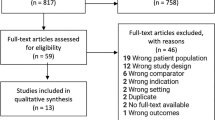Abstract
Introduction and hypothesis
Representatives of two classes of oral medication are often used to treat urgency urinary incontinence (UUI): solifenacin, an M3-receptor-selective antimuscarinic, and mirabegron, a beta-3 agonist. Two previous asynchronous drug-specific studies suggested different interactions between these medications and the urobiome despite identical methodologies, including recruitment, sample procurement, medication dose escalation strategy, determination of 12-week responders versus nonresponders, and data collection. This analysis compares data from these two studies using a uniform analytic approach.
Methods
Urine was collected aseptically via transurethral catheter from consenting participants for subsequent processing by the Expanded Quantitative Urine Culture (EQUC) protocol in two cohorts (n=50 and n=47) that were demographically similar. Species accumulation curves were generated to compare the total number of unique species detected. Indices that measure richness, evenness, and/or abundance were used to compare alpha (within sample) diversity. The Bray–Curtis Dissimilarity Index was used to determine between sample (beta) diversity.
Results
The majority of the 40 species detected in the pre-treatment urobiomes were detected in both cohorts. Both pre-treatment urobiomes were substantially similar in species richness, evenness, and diversity. Differences in pre-treatment urobiomes were associated with treatment response for solifenacin-treated participants only. In contrast, the pre-treatment urobiomes of mirabegron-treated participants were not associated with treatment response. Changes in the post-treatment urobiomes were detected in both cohorts with an increase in richness for both solifenacin (5-mg dose only) and mirabegron.
Conclusions
Pre-treatment urobiome characteristics were associated with treatment response in participants treated with solifenacin, but not mirabegron. Differences exist in urobiome response after treatment with two medications that have known differences in mechanism of action.

Similar content being viewed by others
References
Thomas-White KJ, Hilt EE, Fok C, Pearce MM, Mueller ER, Kliethermes S, et al. Incontinence medication response relates to the female urinary microbiota. Int Urogynecol J. 2016;27:723–33.
Halverson T, Mueller ER, Brubaker L, Wolfe AJ. Symptom improvement with mirabegron treatment is associated with urobiome changes in adult women. Int Urogynecol J. 2022;33(5):1319–28.
Barber MD, Walters MD, Cundiff GW. Responsiveness of the Pelvic Floor Distress Inventory (PFDI) and Pelvic Floor Impact Questionnaire (PFIQ) in women undergoing vaginal surgery and pessary treatment for pelvic organ prolapse. Am J Obstet Gynecol. 2006;194(5):1492–8.
Uebersax JS, Wyman JF, Shumaker SA, McClish DK, Fantl JA. Short forms to assess life quality and symptom distress for urinary incontinence in women: the Incontinence Impact Questionnaire and the Urogenital Distress Inventory. Continence Program for Women Research Group. Neurourol Urodyn. 1995;14(2):131–9.
Brubaker L, Richter HE, Visco A, Mahajan S, Nygaard I, Braun TM, et al. Refractory idiopathic urge urinary incontinence and botulinum A injection. J Urol. 2008;180(1):217–22.
Hilt EE, McKinley K, Pearce MM, Rosenfeld AB, Zilliox MJ, Mueller ER, et al. Urine is not sterile: use of enhanced urine culture techniques to detect resident bacterial flora in the adult female bladder. J Clin Microbiol. 2014;52(3):871–6.
Coyne K, Revicki D, Hunt T, Corey R, Stewart W, Bentkover J, Kurth H, Abrams P. Psychometric validation of an overactive bladder symptom and health-related quality of life questionnaire: the OAB-q. Qual Life Res. 2002;11(6):563–74.
de Groat WC. Integrative control of the lower urinary tract: preclinical perspective. Br J Pharmacol. 2006;147(Suppl 2):S25–40.
Acknowledgements
We thank the participants, Mary Tulke for help in recruitment and sample collection, members of the Wolfe laboratory for sample processing, and Mark Khemmani and Melline Fontes Noronha for help with analyses.
Funding
This study was supported by NIH awards to A.J. Wolfe and L. Brubaker (R21DK097435 and R01DK104718), two Investigator Initiated Grants from Astellas Medical and Scientific Affairs registered at http://www.clinicaltrials.gov as NCT01642277 and NCT02495389, and a grant from the Falk Foundation (LU#202567). Our funding sources had no role in the design and conduct of the study; collection, management, analysis, and interpretation of the data; preparation, review, or approval of the manuscript.
Author information
Authors and Affiliations
Contributions
L. Brubaker, E.R. Mueller, and A.J. Wolfe contributed to the conception and design of the study. E.R. Mueller collected data for the study. T. Halverson and A.J. Wolfe performed the data analysis and statistical analysis. L. Brubaker and A.J. Wolfe drafted the manuscript. All authors contributed to the final manuscript and approved the submitted version.
Corresponding author
Ethics declarations
Conflicts of interest
A.J. Wolfe discloses research support from the NIH, the DOD, the Neilsen Foundation and Pathnostics. He also discloses membership on the advisory boards of Urobiome Therapeutics and Pathnostics. L. Brubaker discloses research funding from NIH and editorial stipends from Female Pelvic Medicine and Reconstructive Surgery, UpToDate, and JAMA. E.R. Mueller discloses research funding from the NIH and author stipends from UpToDate. T. Halverson reports no disclosures.
Additional information
Publisher’s note
Springer Nature remains neutral with regard to jurisdictional claims in published maps and institutional affiliations.
Supplementary Information
ESM 1
(DOCX 31.6 kb)
Rights and permissions
Springer Nature or its licensor (e.g. a society or other partner) holds exclusive rights to this article under a publishing agreement with the author(s) or other rightsholder(s); author self-archiving of the accepted manuscript version of this article is solely governed by the terms of such publishing agreement and applicable law.
About this article
Cite this article
Halverson, T., Mueller, E.R., Brubaker, L. et al. Urobiome changes differ based on OAB treatment in adult females. Int Urogynecol J 34, 1271–1277 (2023). https://doi.org/10.1007/s00192-022-05416-x
Received:
Accepted:
Published:
Issue Date:
DOI: https://doi.org/10.1007/s00192-022-05416-x




